Kohan II: Kings of War Preview
Accessibility is key to TimeGate Studios' fully 3D sequel to its innovative and highly acclaimed fantasy-themed real-time strategy game.
Back in early 2001, a little-known developer called TimeGate studios released Kohan: Immortal Sovereigns in partnership with publisher Strategy First, and the game turned out to be one of the year's most pleasant surprises. At a time when the real-time strategy genre was still popular but starting to feel like it was stuck in a rut, along came Kohan, a fantasy-themed RTS game that completely redefined and streamlined a lot of the genre's most annoying conventions. Specifically, Kohan succeeded at letting the player concentrate on pure strategy, since the game automated a lot of the micromanagement-type tasks commonly associated with RTS gaming. That same year, TimeGate and Strategy First rereleased the game as Kohan: Ahriman's Gift, which tweaked the gameplay to near-perfection. Years later, many hardcore RTS fans continue to play that game zealously. Meanwhile, TimeGate has been working on a full-fledged sequel, and Kohan II: Kings of War is finally nearing the finishing line. The game is currently undergoing multiplayer beta testing and is slated for release early this fall. We recently had a chance to take a close look at the work in progress and are here with all the details.
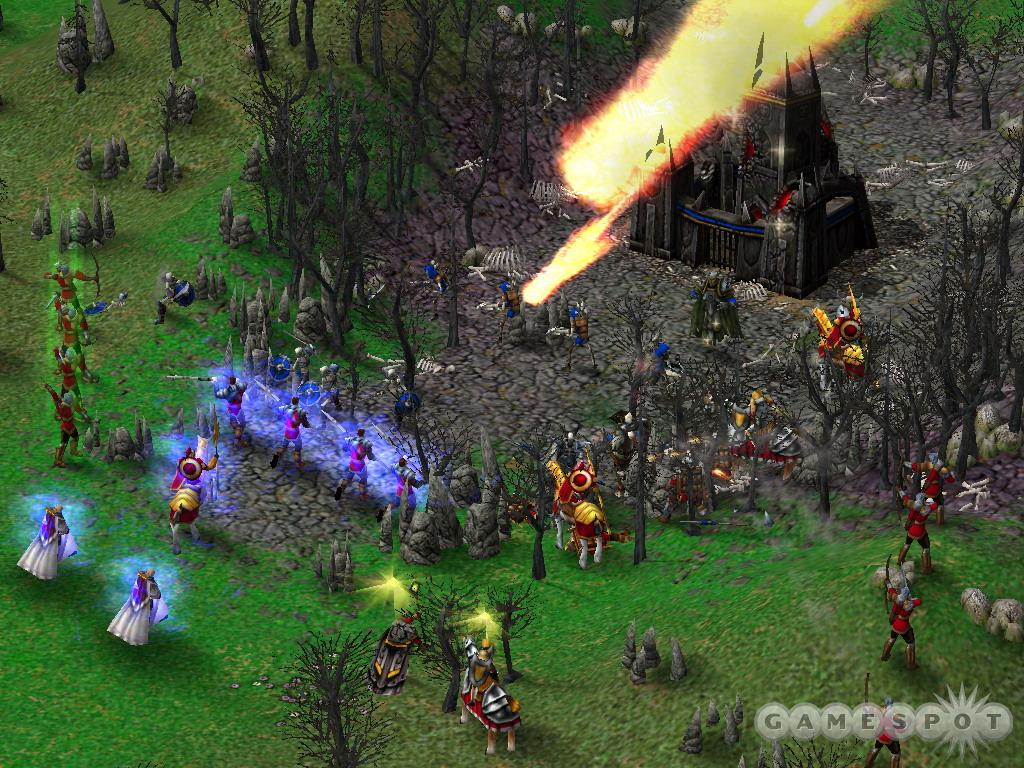
The design motives behind Kohan II are fairly apparent. The 2001 Kohan games earned widespread critical acclaim and were beloved by the game's audience--but they didn't reach nearly the same number of gamers as the genre's best-known franchises, like Warcraft and Command & Conquer. The developers at TimeGate Studios have partly attributed this to the Kohan games' unremarkable (though clean and utilitarian) 2D graphics, as well as to the overall complexity of the game's design and interface. As such, Kohan II is focused on bringing a more contemporary look to the series (it's a fully 3D game whose graphics are quite reminiscent of Ensemble Studios' Age of Mythology), and the game will also feature an even more streamlined interface than its predecessors. Judging by some of the reactions from longtime series fans on TimeGate's message boards, this new direction for the series hasn't been entirely well received, but from what we've seen of the game, it still looks faithful to the spirit of the series. More importantly, it looks like it could be a complex, deep, and interesting real-time strategy game.
Kohan II will be a fully featured real-time strategy game, with an extensive story-driven single-player campaign, a complete versus-CPU skirmish mode (with a random scenario generator and multiple difficulty settings for computer opponents), an online multiplayer mode for up to eight players per match, and a map editor for making custom battles. The game will feature six different playable races as well as five different factions--the latter of which will affect some of the races' particular bonuses and strategic inclinations. Battles will be waged in the context of the Kohan series' unique fantasy world, which has telltale swords and sorcery but isn't muddled down with tired conventions like elves and dragons. One of the issues that probably limited the previous Kohan games' appeal was that, despite their having extensively detailed stories, they didn't succeed at immediately connecting players with their fiction. Simply put, the Kohan setting and characters lacked personality.
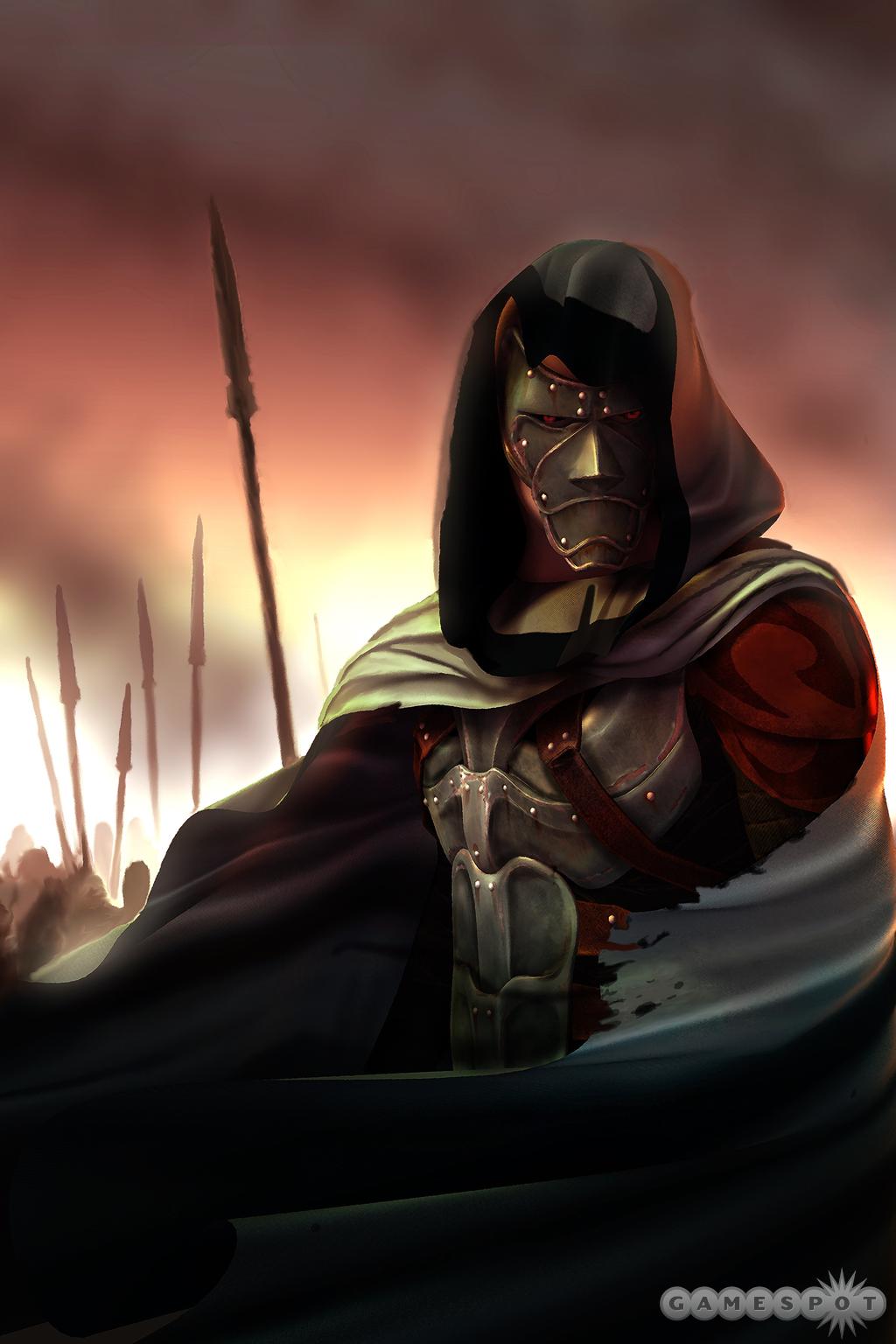
TimeGate Studios is hoping to address this in the sequel by introducing a number of fantastical, new races to the series, as well as by transitioning to a more detailed, fully 3D engine. In Kohan II, each unit will have multiple attacks (and attack animations) as well as unique idle animations. The various races and race/faction combinations are all expected to play quite differently, and during the course of the game's campaign, players will get a chance to take command of them all--if only to prepare themselves for skirmish and multiplayer battles. From what we saw of the 3D graphics, they did indeed look quite good. The game's units are detailed but appear fairly small onscreen, making Kohan II appear much more similar to a larger-scale 3D RTS like Age of Mythology rather than, say, the closer perspective of Blizzard's Warcraft III. We weren't immediately struck by the different units' respective personalities or anything like that, but we were readily able to discern one type of unit from another, and some of them--such as the massive undead bone golems we saw tearing through enemy settlements--looked quite cool.
But Kohan never distinguished itself by being flashy. It distinguished itself with truly great gameplay. Read on to learn how Kohan II is seeking to combine the greatest aspects of its predecessors with some significant, new twists.
Companies at War
As in the previous Kohan games, there are two fundamentally important aspects of Kohan II's design that should distinguish the game from all the others out there. One is that rather than commanding a whole bunch of individual units on a map, you instead command companies, which are groups of five to nine units led by a powerful leader. Companies gain experience as they battle and provide the player with a considerable level of versatility. For instance, you may arrange a company in a line formation to make it travel as quickly as possible, or you may fan out the company in an attack formation to best prepare it for an enemy confrontation. Companies are not eliminated unless every last unit in the company is killed, so strategic retreats are important in Kohan. Therefore it's best to keep a company alive to fight another day. Kohan II will retain the series' focus on battles between companies, and it will feature a basic morale system (companies will rout if facing impossible odds) and a supply system (companies will automatically recover their hit points and any lost units when with the supply lines of their settlements).
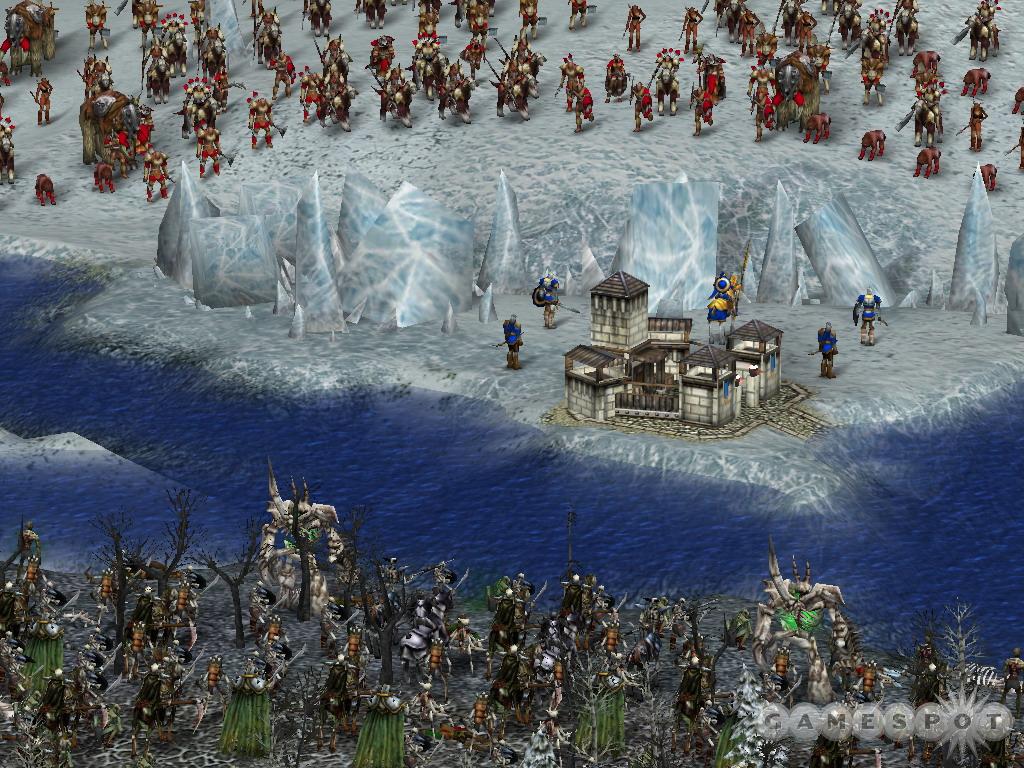
The Kohan series' other main twist is that its resource model is highly streamlined and relatively abstract. In the end, you really only need to worry about your net gain or loss of gold, though there are other resources, including stone, wood, iron, and mana, from which gold can be derived. At your race's settlement, you may build or upgrade structures that bolster your flow of resources, but maintaining companies on the field cuts into those resources, demanding that you constantly invest in new infrastructure. Still, you needn't worry about the minutia of building lots of worker units and forcing them to work on various mundane tasks, because that's all handled automatically. All you need to do is keep your resources in the black to fund your war machine.
Kohan II will feature certain interface enhancements to make company management and resource management as simple and readily accessible as can be. As in most other recent RTS games, in Kohan II you'll need to expand your race's borders to encompass more than just its starting settlement. But you will be able to manage a whole bunch of bases simultaneously thanks to the settlements panel, which lets you build or upgrade new structures from any of the settlements you control from any point on the map at any time. A similar view is available for issuing orders to all of your companies simultaneously or for micromanaging individual companies, if you so choose.
Good, intuitive artificial intelligence features should be pervasive in Kohan II. For example, we got to watch as a settlement automatically defended itself from attackers. Militia units scrambled to face the insurgents, and once the battle was won, they even repaired and rebuilt the damaged portions of the town. Meanwhile, on offense, we watched as a company--which was ordered to strike at the heart of an enemy settlement--intelligently prioritized dangerous targets prior to focusing its attention on razing the structure. Again, the Kohan games aren't about micromanagement; their goal is to free up players' time so that they can focus on the big picture.
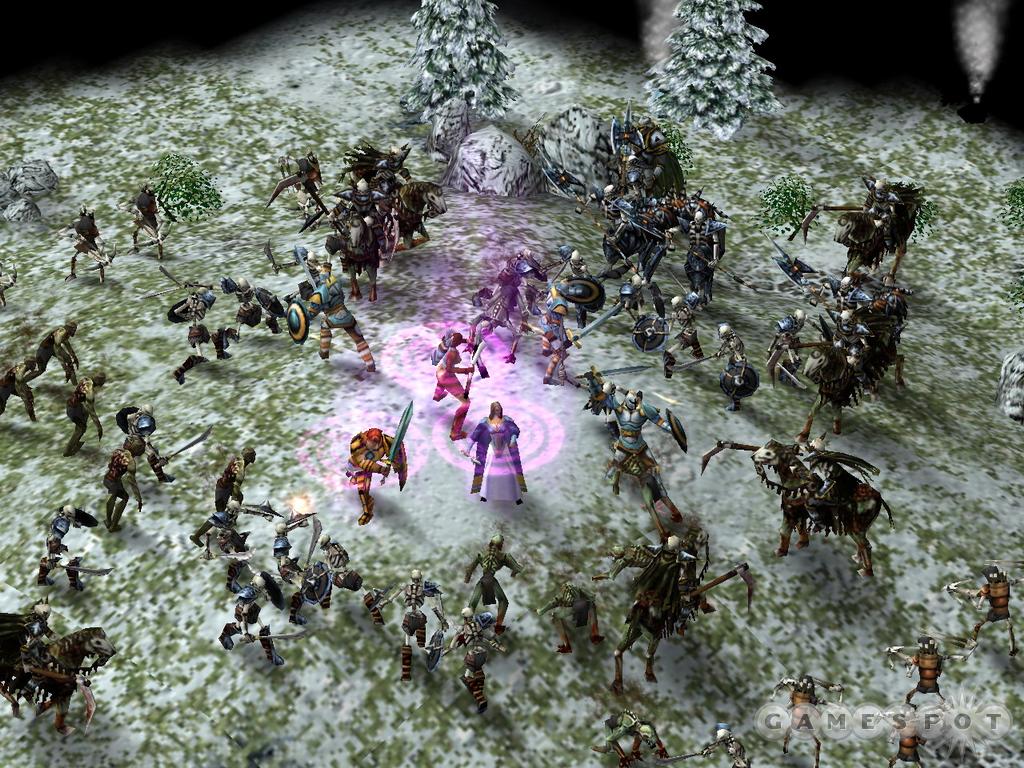
How much automation is too much, though? Does Kohan II just play itself, or what? We didn't get that impression. There's a fine, subtle level of control that seems to be available, which should allow more-experienced players to distinguish themselves in battle. For instance, it's possible to switch company formations on the fly, thereby maximizing speed and combat effectiveness. It's also possible to create and save custom companies by designating specific units for the front line, flanking, and support positions. Players who best mix and match unit types within companies--and then combine other companies--will come away victorious in Kohan II's battles.
Kohan II will feature a number of new twists not found in previous games in the series, such as siege combat and what are called "tech lairs," which are neutral areas on the map that can confer their benefits to those bold enough to stake their claims to them. Read on to learn about these and other features from the game.
Who's Who in Kohan II
We've seen half of Kohan II's six races in action--the humans, the undead, and the drauga, a race of beastlike savages. The TimeGate Web site reveals, at least, the names of two other factions--the gauri and the haroun. And we also learned a year ago that a powerful, villainous race known only as the fallen will figure into the proceedings. The three races we got to see in action looked noticeably different from a superficial level, and we confirmed that each of the game's races will, in fact, feature its own unique interface graphics, terrain tilesets, and musical themes--not to mention units, structures, and special abilities. We learned, for instance, that one of the undead race's distinct advantages will be its companies' ability to regenerate anywhere on the map (whereas other races will only recover within their supply lines, as mentioned). To offset this, undead units will likely be weaker on a per-unit level than those of other races.
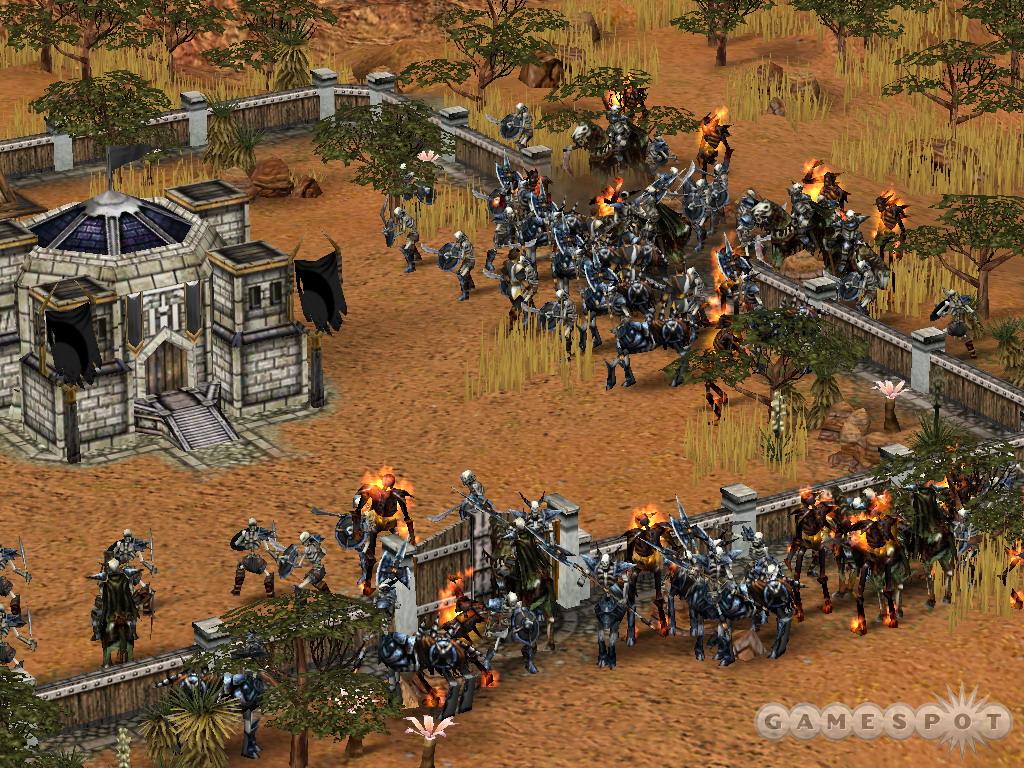
Kohan II experts are going to have to learn all the races rather than focus on just one, however. Battles are all about ebb and flow; you don't simply raze enemy settlements. You capture them to gain control of their units and technologies. So, for instance, it will be possible to command human, drauga, and undead companies all in a single match, though the races' respective benefits will not unnaturally carry over to their allies. Still, this should ensure that Kohan II matches are quite sophisticated, what with having to keep track of lots of different types of units in a single battle. But this is the type of thing that makes RTS games interesting.
Siege combat will be new to Kohan II, which will introduce siege "companies" consisting of but a single, powerful unit--like, for instance, the undead bone golem or the human catapult. These units, as you'd expect, are powerful against enemy fortifications and structures but are vulnerable to units. Properly defending them will be key to efficiently wresting control of opposing territory--as well as tech lairs.
There will be a variety of tech lairs in Kohan II, ranging from structures that bolster your resources, to structures that grant new magical abilities to some of your units, to structures that give you access to entirely new, normally unavailable units. Tech lairs will usually be heavily defended, and even if occupied, they can be contested by opposing players. However, tech lairs offer advantages that make them well worth hanging onto. Tech lairs should also help make random maps a lot more interesting.
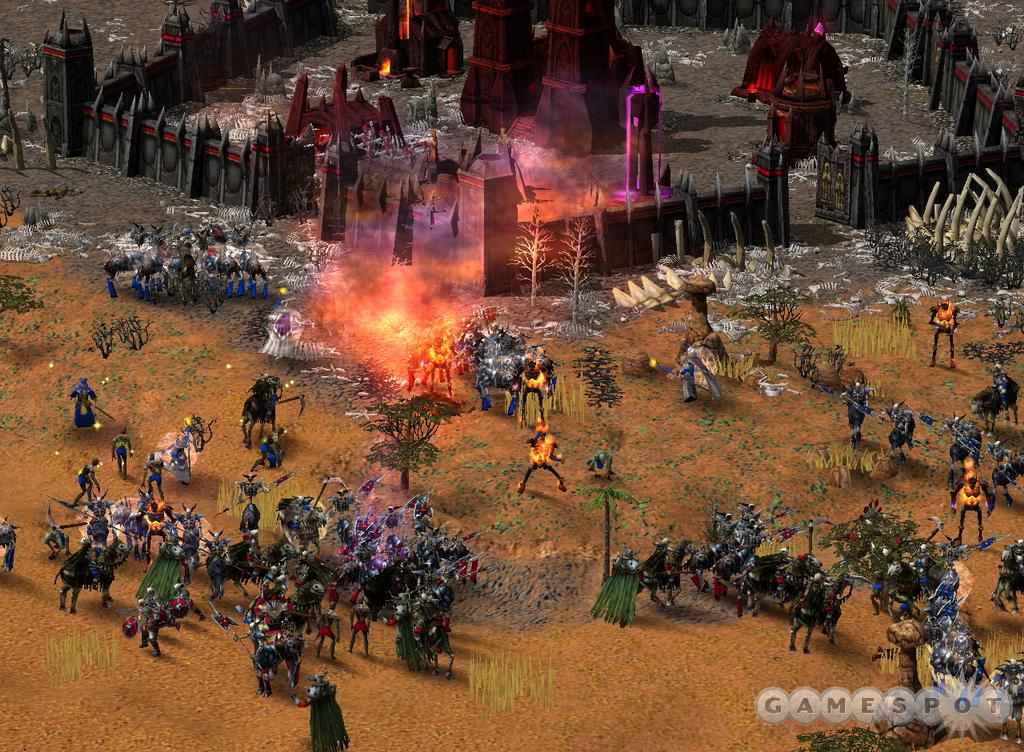
Kohan II will also feature hero characters, which can be commissioned to lead companies of warriors instead of the regular, generic company leader units. Heroes are unique and powerful characters with their own special abilities, and some heroes will even vary in speed. Some of the most powerful heroes, for instance, might lumber about the map more slowly than normal, which represents a minor penalty that offsets the heroes' immense strength.
Detail-driven, sophisticated gameplay has been key to Kohan from the get-go. The original games are the type you'd think about even when you weren't playing them. As a result, you'd contemplate such things as how best to maximize resource allocation, how best to arrange companies, when and where to attack the foe, and other, simple considerations that invited, even demanded, considerable strategic thought. From what we've seen, Kohan II looks like it will share its predecessors' strategic densities. Its matches should be relatively long and involved--and not like the quick-hit deathmatches that have become popular in other recent RTS games. Yet Kohan II does look like it's quite easy to get into, as far as RTS games go. Some of the gameplay differences may not seem immediately appealing to the series' hardcore fans, but they--and all RTS fans--ought to have faith. Right now, the game is in full-on testing mode, so we expect that it will be extensively balanced and tweaked out over the next several months. We're looking forward to bringing you more details on Kohan II as it shapes up.
Got a news tip or want to contact us directly? Email news@gamespot.com
Join the conversation